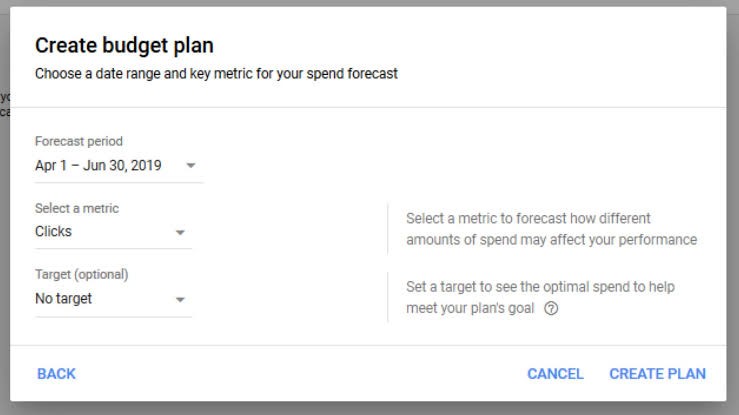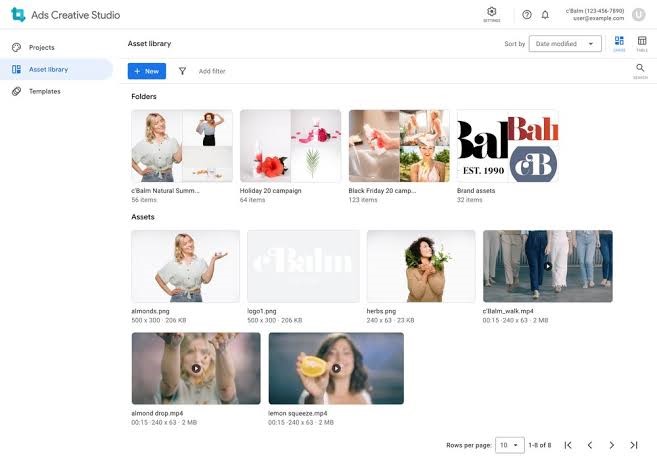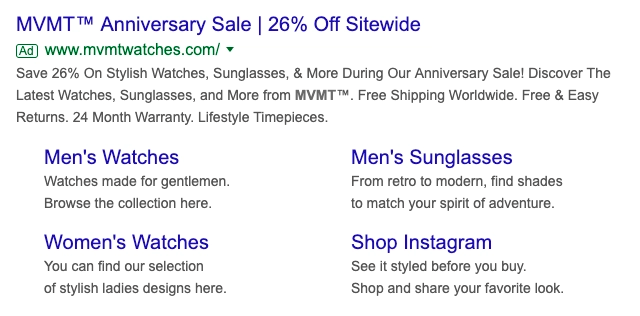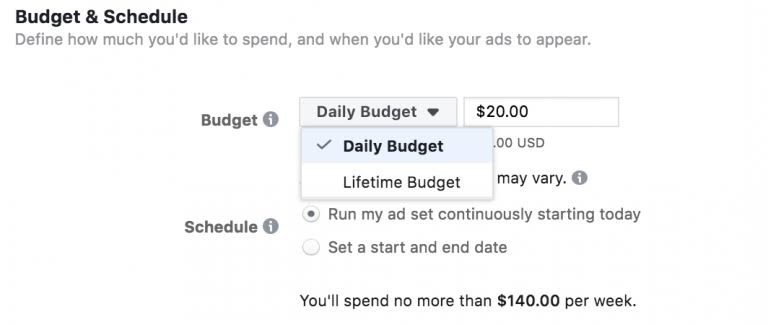ECommerce advertising is the bedrock of any eCommerce business. Unless you want your online store to live in the shadows of the internet, you need to constantly market your eCommerce business and product creating awareness and generating sales. There are several eCommerce advertising models. However, we will focus on the PPC model of Google and Facebook – the two ad publishers that best target your potential customers. Before we consider Google eCommerce ads and Facebook eCommerce ads in detail, let us first understand what is meant by the term ‘eCommerce advertising.’
What is eCommerce advertising?
eCommerce advertising is simply the act of running paid ads with the intent of selling a product online. As an advertiser, you pay to bid for ad space on an ad publisher like Google or Facebook thus generating impressions and clicks with the aim of persuading viewers with your ad message to either buy your product or order your services. In its variety, eCommerce advertising makes available to your business the ideal type of ad from video ads to carousel ads to match your business goals and advertising strategy. ECommerce advertising is simply a type of online advertising that is geared toward online sales.
eCommerce PPC
eCommerce PPC or PPC for eCommerce as it is otherwise called is an eCommerce advertising strategy. This kind of eCommerce advertising can be displayed on search engines, websites, as well as social media platforms depending on the ad publisher you choose. eCommerce PPC is a tool for retargeting individuals who are ready to buy. This makes it an effective method of eCommerce advertising. PPC for eCommerce can boost traffic to your website and increase your online sales. But what exactly is PPC?
What does PPC stand for?
PPC stands for pay-per-click. It is a method of advertising online whereby you bid for an ad space and only pay a certain amount when someone clicks on your ad. With PPC, your ad is displayed by your ad publisher but you do not pay unless someone clicks on it. This model of advertising generates quality leads as it allows you to pay for only users who are interested and in need of the product you’re offering. Most times, these individuals are ready to make the purchase.
Google ads for eCommerce
Google Ads is an advertising platform owned by Google. Google Ads allows you to bid for ad placement, and like other ad publishers, it allows advertisers to use the PPC model of advertising. Using Google ads eCommerce provides your online store with two main ad placement options. You can opt for the regular search ads that place your ad message above organic results, or you could choose the more visual Google Shopping ads. Google Shopping ads are displayed above search results when a user inputs a search term indicating that they are shopping for a product. With Google shopping ads, product information, as well as images, are displayed compelling a searcher to click on your product. Google Search ads and Google Shopping ads can both be implemented into your overall eCommerce ads strategy.
Why use Google Ads?
With over 80 billion visits each month, it’s pretty clear Google is the go-to place for people who are looking for various online results, such as answers to questions, solving specific issues, looking for a product, and much more. This is exactly how potential customers will find your business thanks to Google ads: it will place your eCommerce business as a reputable result when the keywords in your ad are triggered by a search. Using Google ads displays your eCommerce business in front of a huge user base, and using the PPC model of online advertising means you do not have to pay unless an interested user clicks on your ad message. Google ads are flexible, scalable, and they can provide results faster than SEO.
Google Analytics Audience Report

Analytics is an important part of online advertising, and Google Analytics is a powerful tool that lets you track advertising campaigns and overall audience behavior. In a nutshell, Google Analytics lets you see what people do on your website after clicking on your Google Ads. Audience Report in Google Analytics provides you with powerful insights and data on your audience that, when used wisely, can enhance your advertising efforts. With Google Analytics Audience Report, you can find information about your audience, their demographics, interests, behavior, how they found your website, how they engage with it, and whether they are converting. Data made available by the Google Analytics Audience Report can help you rethink and improve your entire Google PPC campaigns.
Facebook ads for eCommerce
Facebook ads, now known as Meta Ads, is an advertising platform where you can run PPC ads across Facebook products and the Meta Audience network. It is developed and owned by the social networking company Facebook (now Meta). Facebook ads for eCommerce offer your eCommerce business a number of display ads options. Dynamic Product ads, Collection ads, Video ads, and Carousel ads are some of the advertising options made available by Facebook ads eCommerce. Facebook ads also provide a rich list of ad placement options. You can choose to have your ads appear as a Facebook story, on Facebook Messenger, or inflow with other posts on your target audience timeline. With Facebook ads for eCommerce, you can also choose to have your ad message appear across all placement options.
Why use Facebook ads?
There are over 2.9 billion Facebook users. With such a massive user base, it is undeniable that your potential customers are on Facebook. Implementing Facebook ads as a part of your advertising strategy is a sure way to put your eCommerce business right in front of potential buyers. Facebook ads offer eCommerce lots of opportunities that are likely not to be found anywhere else. From a robust analytic platform to the ability to target a very specific audience, Facebook ads can give you the desired results and are usually very affordable. Facebook ads are also a great tool for creating awareness for your eCommerce business. Running Facebook eCommerce ads can put your eCommerce business in front of a whole new set of people, thus bringing in new likes and increasing your number of followers.
Facebook Audience Insights

Facebook Audience Insights is a powerful tool that provides businesses with information about their audience. This information can then be used by these businesses to create ads that resonate with their audience. Facebook Audience Insight can help eCommerce businesses determine the right kind of ad for a specific audience to make sure it is relevant for them. Facebook Audience Insights provides you with information about people who are directly connected to your eCommerce page, people who are in your custom audience if you have one created, and people who are on Facebook in general. This tool provides more information about your target audience than just their age and gender. It provides a ton of demographic information, interests, and behavior of your audience. When used wisely, this tool could be a game changer for your Facebook PPC efforts.
Google and Facebook ads strategies for eCommerce
Google ads strategy for eCommerce
- Using Negative Keyword
When creating a Google eCommerce ad, you choose a list of keywords you want your ad to appear for. Using negative keywords is the exact opposite. We recommend using negative keywords as it lets you filter out the search you do not want to appear for, thus gaining more control over your ad.
- Creating a separate campaign for each of your products
One tip we give eCommerce businesses with multiple products is to create a separate campaign for each of their main products. We believe this makes it easier to track the performance of individual products and optimize each one as needed.
- Include a special offer in your ad
Adding a special offer on your Google eCommerce ad can increase your ROI. A simple “free shipping” tag can set you apart from other ads, thus making ready-to-buy shoppers click your ad.
Create a Google eCommerce ad
- Log into your Google Ad account

The first step to creating a Google eCommerce ad for your eCommerce business is to visit the Google Ads website. Click the “Start Now” button to create an account if you don’t already have one.
- Select your desired campaign type

Once you are in your Google Ads dashboard, click the button that reads “Create your first campaign.” You will be given a list of options to select your campaign type including ‘Search,’ ‘Shopping,’ and ‘Performance Max.’ For most eCommerce businesses, we recommend Performance Max. This lets you reach audiences across different placements with a single ad.
- Customizing your Audience

Before setting out to create a Google ad for eCommerce, you should have mapped out your target audiences. At this stage, you select who you want to see your ad. You may choose to show your ad to an entire country or select a small city in your state. You also have the option to select the devices you want to target.
- Set your preferred budget

Google ads for eCommerce lets you set a daily budget. Keep in mind that Google can go over this budget. As a result, we recommend you adjust your budget weekly as you see fit to avoid spending over your monthly budget.
- Choose your keywords

Keywords are what trigger your ad in searches. Select keywords that you are sure a potential customer will type into Google when searching for a product you sell.
- Create your ad

This is where you create your eCommerce ad as you want it to appear on Google. Use keyword phrases in your headline and focus on the major benefits of your product and special offers in your ad description.
- Conversion tracking
![]()
Google ads for eCommerce provide you with a number of tracking options. We recommend you set up conversion tracking to measure and evaluate the effectiveness of your Google eCommerce ad.
Google eCommerce ad example
Here are some Google eCommerce advertising examples to learn from.
1. Add star ratings to your Google ads for eCommerce

2. Create a sense of urgency with an added incentive.

3. Display a discount on your ads

4. Use unique imagery

5. Promote different categories

Facebook Ads Strategy for eCommerce
Facebook Ads may possess the ability to let your eCommerce business reach new paying customers but to get the best results possible it all comes down to how you use the tool. This is why you need a mapped-out plan that can help you achieve the one goal of every eCommerce business: meeting sales targets. Here, you will find a few Facebook Ads strategies for eCommerce to get you off the ground.
- Set up your Meta Pixel
Meta Pixel, formerly known as Facebook Pixel, is a piece of code you add to your eCommerce store. Setting up Meta Pixel allows you to track activities that take place on your online store after a user clicks your ad and lands on your website. It lets you know how much sales and revenue are coming from the clicks on your ad. With data from Meta Pixel, you can optimize existing Facebook ads, build a targeted audience, and retarget a set of users who have taken a specific action on your website. For example, you can retarget users who abandoned their cart without checking out. You could also promote a particular product to only a set of users who added that product to their wish list. Without Meta Pixel on your site, you cannot achieve any of these.
- Reach more people with lookalike and custom audiences
Facebook lookalike audiences are people who have not interacted with your eCommerce business in any way but are similar to people who have. Custom audiences, on the other hand, are those who have interacted with your business in one way or the other. A list of users who abandoned your cart is an example of a custom audience. Retargeting them with the right message can help them go through with their decision to buy. You can also retarget a custom audience of existing customers by offering discounts on a new product.
- Determine the right display ad option for the audience and goal
Facebook Audience Insights provides you with tons of information about your audience. With this, you can determine the type of ad display option that would result in better engagement. Collection ads may be perfect for some audiences while carousel ads may be the right choice for another audience. As you consider the right display option for a campaign, make sure to also keep your goal in mind. If you want ads to be targeted at each potential customer based on their interest and behavior, then a dynamic ad is your best bet.
Create a FB eCommerce ad
Once you’ve studied and understood your audience with Facebook Audience Insight and you have created the right strategy to reach them, it’s time to create your Facebook Ad.
- Create your eCommerce Facebook Page

If your eCommerce business does not have a Facebook page already, you will need to create one right away to be able to run Facebook ads for eCommerce.
- Visit the Facebook Ads Manager

Every activity relating to setting up your Facebook eCommerce ads will be done from the Facebook Ads Manager.
- Choose your campaign objective

In your ads manager, click the green button that reads “Create Ad.” You will be prompted to select a campaign objective. You can select an objective from a list of options including Awareness, Consideration, and Conversion. Unless your eCommerce ads strategy requires a different point of focus, conversion should be the aim of your online store. Choose your campaign objective, name your campaign, and move to the next step.
- Set your preferred budget

With Facebook ads for eCommerce, you get to decide how much you want to spend. The figure you enter in this section defines the maximum amount of money you wish to spend. You can then set whether this is a daily budget or a lifetime budget. A daily budget tells Facebook you want to spend this amount daily while a lifetime budget says this is the maximum amount you want to spend as long as you keep this ad running.
- Set your target audience

This determines who your ad will be shown to. Facebook offers you a robust tool to target a specific or customized audience. The values you enter here are important for the success of your eCommerce ad campaign.
- Select your preferred Facebook eCommerce ad placement

Ad placement is where your eCommerce ad will appear on Facebook. You can select from a list of options including Instagram and Messenger. However, Facebook recommends using the automatic ad placement option.
- Creating the display ad

At this point, you create the actual ad and get to see how it will appear across Facebook. You may use an existing post or create a new ad. This is where you determine how your ad will display, be it a carousel, video, or single image.
- Publish your ad

The last step is publishing your eCommerce ad. Click the “Publish” button and your ad will be submitted. You will be required to wait between a few hours to a day for Facebook to review your ad before it gets published.
eCommerce Facebook ads examples
Here are some Facebook eCommerce advertising examples to learn from.
1. High-quality images of your product in your Facebook eCommerce ad can help you stand out.

2. Giving a face to your product adds a human touch, especially if you are a fashion brand.

3. Carousel ads can help you show off a range of your eCommerce product.

4. Highlight the problems your eCommerce product solves.

5. Use testimonials and social proof in your Facebook eCommerce ads.

Which ad platform is better?
Facebook eCommerce ads and Google eCommerce ads are both powerful online advertising tools for eCommerce businesses. They both have their strengths and we recommend that your eCommerce business use them both as part of an overall advertising strategy. Facebook eCommerce ads and Google eCommerce ads are both good at what they do. Leaving one out would mean losing out on a huge opportunity to target a whole different group of potential buyers. Facebook eCommerce ads can help eCommerce businesses that are looking to increase awareness for their products. Facebook eCommerce ads offer you the right targeting options to display your eCommerce business and its product in front of a new audience. With Facebook eCommerce ads, you can also retarget individuals who have interacted with your eCommerce business with specific messages aimed at conversion. Google eCommerce ads are best for your eCommerce business when you wish to display your product in front of users who are actively searching for it. This makes Google ads effective as you are targeting potential customers in their buying phase. Our professional advice is that you create two main ads. On one hand, you should create a Google eCommerce ad that targets users who are ready to buy. On the other hand, you should complement that with a Facebook eCommerce ad that is retargeting a custom audience or building brand awareness with a new audience. Both of them working together will help you scale your eCommerce business.
To wrap it all up… For an eCommerce business, the only way to reach a new audience online is through a good ad campaign. Most times, an ad campaign is also required to get existing customers to shop for more. With shopping ads generating over 80% of all clicks, your eCommerce business needs a solid advertising strategy if you really want to meet sales targets. At Nomadic Advertising, this is what we do best. We are advertising experts and we can create the perfect eCommerce advertising strategy that will constantly keep your eCommerce ads on display for ready-to-buy shoppers. To ensure your eCommerce store gets the most out of your advertising budget, we use both Google eCommerce ads and Facebook eCommerce ads as part of a bigger marketing strategy, thus reaching a wide selection of online shoppers who are interested in your product. Contact us today for a result-driven eCommerce advertising strategy or book a FREE 30-minute consultation with us to discuss which option is best for you.
Key Takeaways
- eCommerce PPC is an eCommerce advertising model where you only pay when your ads are clicked.
- Both Google and Facebook are ad publishers offering advertisers PPC advertising.
- Google eCommerce ads and Facebook eCommerce ads both provide robust solutions to create high-converting ads.
- The best PPC strategy will be to use both Google eCommerce ads and Facebook eCommerce ads for maximum results.





